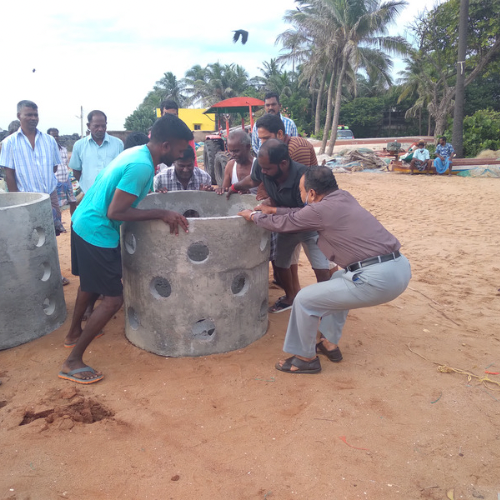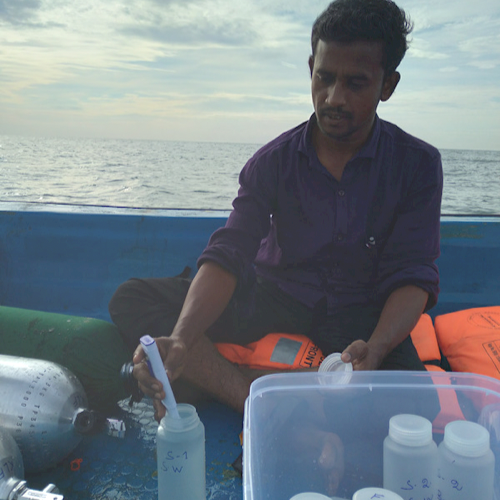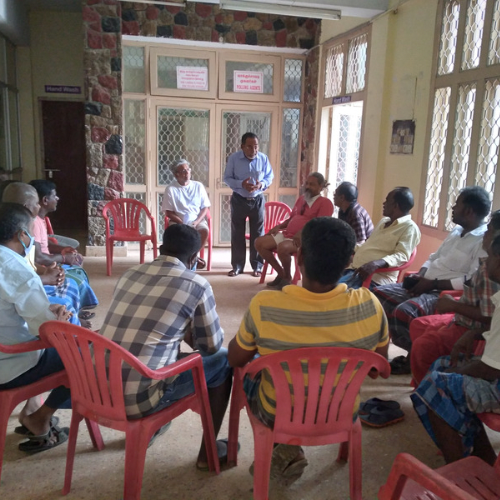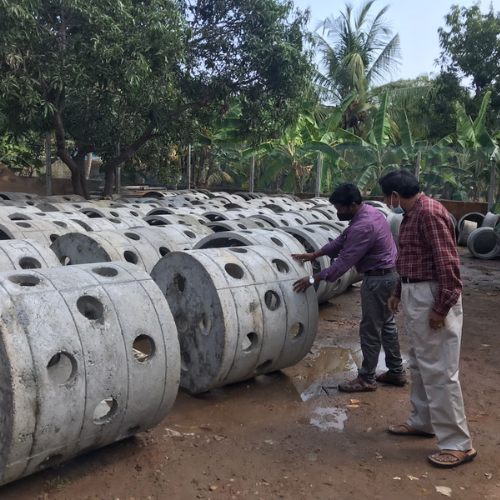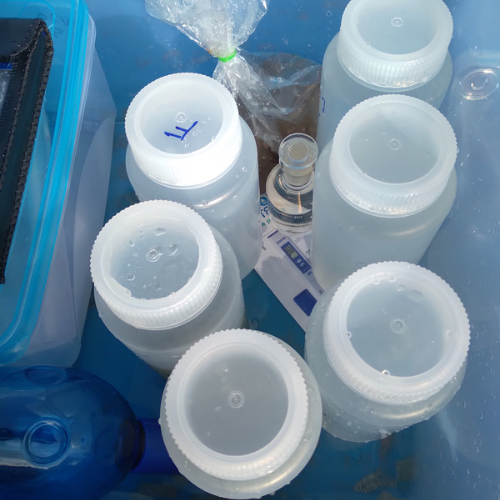Artificial reefs for livelihood enhancement
The concept of artificial reefs has a rich and varied history that spans multiple centuries and cultures. Ancient civilizations, such as the Persians & Romans in the 5th & 3rd century BCE, respectively, constructed artificial reefs using rocks and debris to improve fishing yields or protect coastal regions. The Japanese have used artificial reefs for fish aggregation since the 17th century.
Scientific studies of artificial reefs, specifically for enhancing marine habitats and biodiversity, began in the mid-20th century.
What are Artificial Reefs?
Artificial reefs are man-made structures that are either placed on or have found their way (ships like the RMS, Titanic or planes from WWII) to the ocean floor. Over a period, these structures attract plankton, sponges, barnacles, cephalopods, and fish looking for food & shelter. Some of these structures have also been colonised by a variety of hard and soft corals. The artificial objects, therefore, become the base on which the marine ecosystem is built, leading to the rejuvenation of the marine environment and an increase in livelihood for fishing communities.
Artificial Reef Maturation – The Biological Process.
Artificial reefs have been looked at as a way of enhancing fish stocks for artisanal, recreational and small-scale fishermen. Fisheries around the world have also been working on creating these reefs to reduce conflict between commercial fishing boats and artisanal fisherfolk. With an increase in the global demand for fish, artificial reefs are being used to answer some questions pertaining to sustainability, natural produce and helping with increasing fish stock.
The life cycle of our artificial reefs initiates with the formation of a bacterial biofilm that gracefully covers the surface of the reef modules, soon succeeded by the arrival of both macro and microalgae.
This burgeoning ecosystem rapidly attracts biofoulers including barnacles, sponges, tunicates, ascidians, gorgonids, sea fans, and anemones. Nearby, we see a flux of sea urchins, sea cucumbers, starfish, chanks, and clams exploring this new environment.
As the reef matures, it becomes a sanctuary for diverse juvenile and small fish seeking nourishment and shelter. This, in turn, draws the attention of mid to large-sized pelagic fish species, which hold substantial commercial value, as they begin to frequent the reefs in their quest for food.
In time, these larger fish species transform the reef into their breeding grounds, further enhancing the ecosystem’s richness and diversity.
Thus, the reef evolves into a flourishing, biodiversity-rich habitat, serving as a consistent source of commercially valuable fish, thus contributing to the local economy.
Putting the smile back in rural fishing communities.
The Pondicherry fishing villages are similar to fishing villages and communities around the world; they depend heavily on the sea, and there is a divide between commercial fisheries and artisanal fishermen. This is a situation that can cause animosity and is detrimental to the functioning of communities. Over the past year, Kuddle Life Foundation has been in talks with the fishing villages of Pondicherry to try and better understand the challenges being faced by local fishermen. Over the years, there have been a number of problems that have been magnified. With natural calamities, climate change, increasing surface water temperatures, frequent storms and anthropogenic factors such as overfishing as well as an increase in human population, artisanal fishermen are struggling to sustain their age-old fishing traditions.
We chose artificial reefs as one of our main projects as we thought it was vital to help reduce the stress on artisanal fishermen and thereby enhance the Pondicherry seascape. The Artificial Reefs for Livelihood Enhancement is a project that we deeply believe in and is backed up with years of scientific data from India and the world over. One of the leading scientists in the field of artificial reefs in India, Dr. Mohammed Kasim, is now an active advisor to Kuddle Life Foundation.
The journey towards establishing an artificial reef commences with proactive dialogues with local artisanal fishing communities. We ascertain their interest and commitment to hosting a reef for their locality, followed by securing necessary government authorizations.
Our on-site efforts begin with meticulously assessing potential locations for reef installation. This crucial surveying process is a collaborative endeavour involving community members, KLF’s expert scientists, and experienced scuba divers. Comprehensive analyses of water, soil, and plankton, combined with the community’s preferences, enable us to select the ideal site.
Designing and creating the artificial reef modules align with specifications defined by KLF’s scientific team. The subsequent transportation and installation of these modules necessitate comprehensive logistics management, with safety protocols stringently adhered to at every step.
Upon successful deployment, the reef requires regular monitoring and maintenance. We conduct ongoing scientific research to gain deeper insights into the reef maturation process and ensure debris and ghost nets are efficiently removed.
Furthermore, we collaborate with the fishing communities to foster a sense of ownership and awareness of the reef within their village. We assist in forming a reef management committee, facilitating sustainable and responsible stewardship of the new marine habitat.

